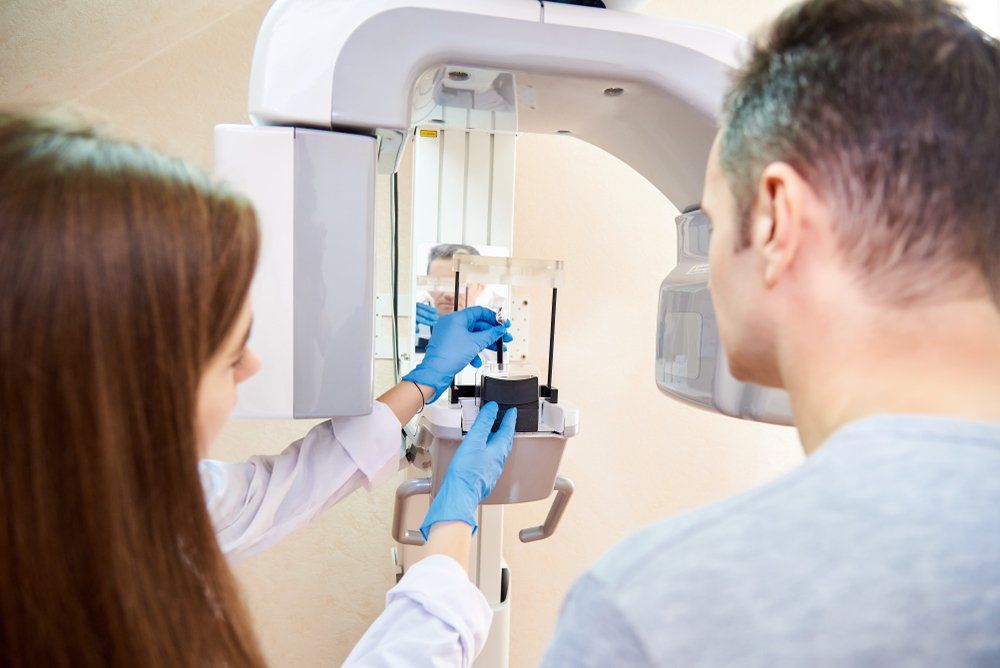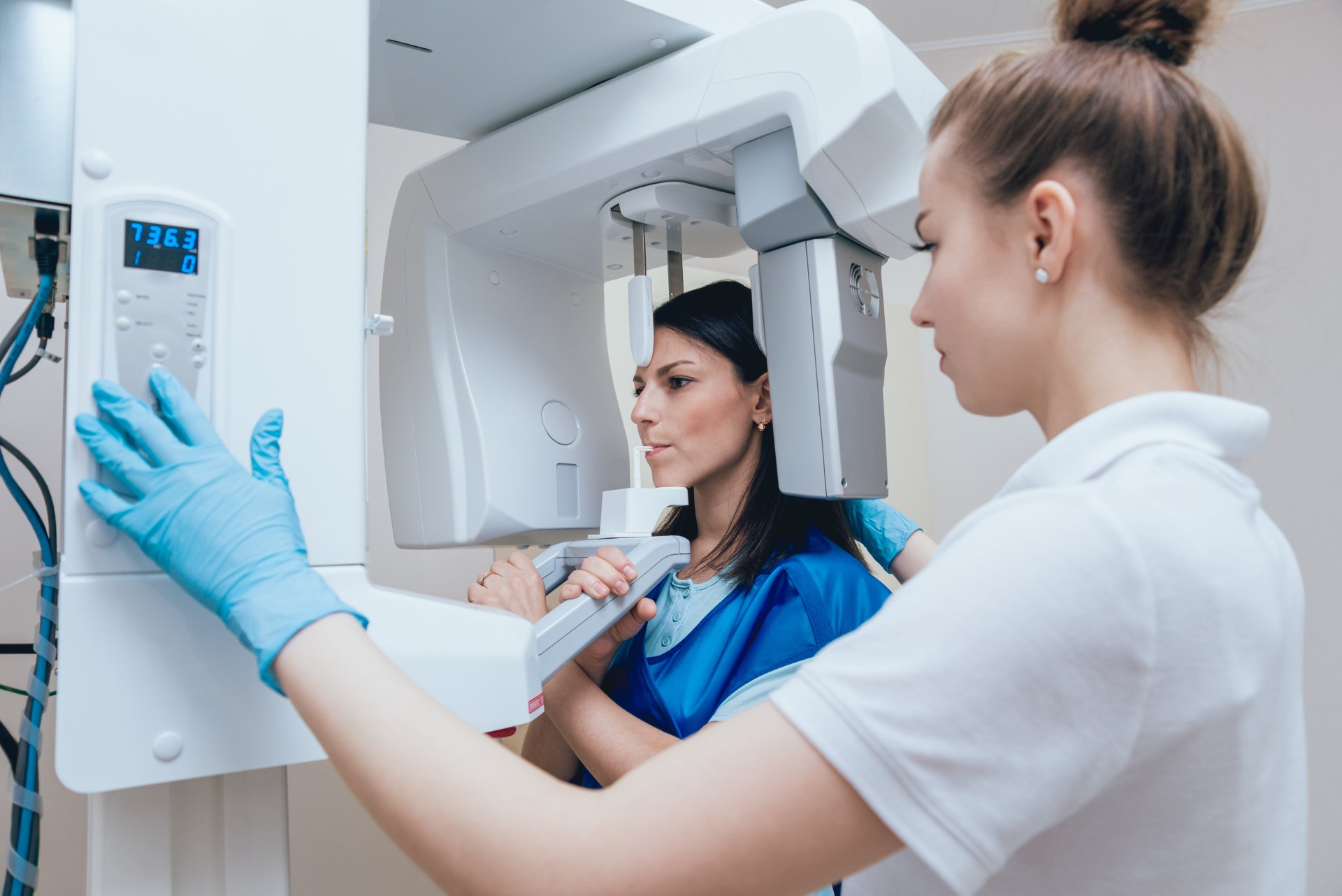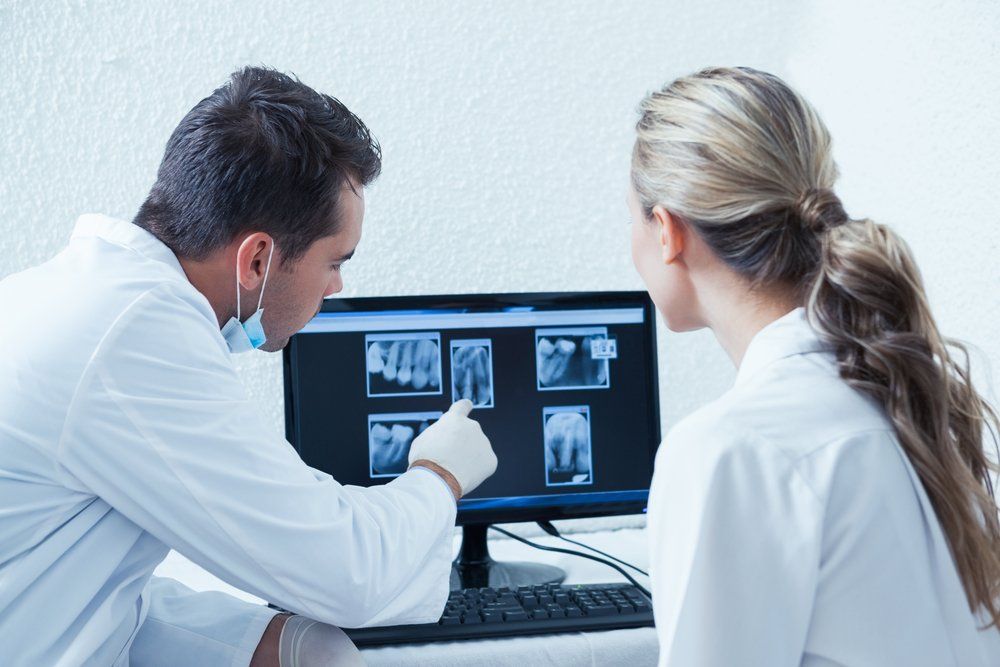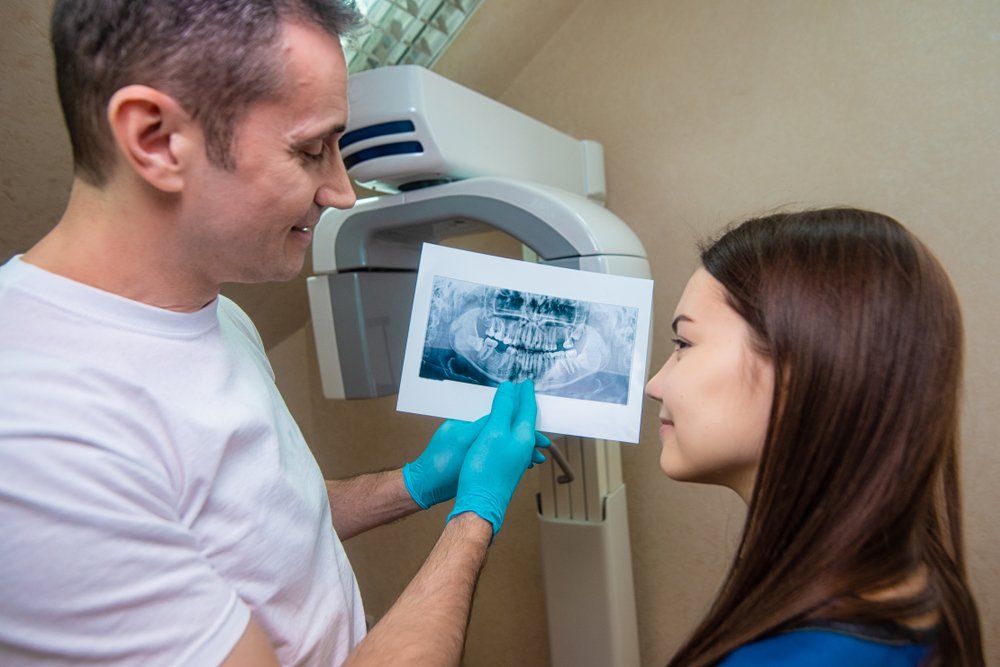Dental Technology
Dental technology has introduced innovative advancements over the last few years, making dental appointments quicker and much more thorough. Some of the laborious tasks of dentistry have been simplified and the process for several of these duties has proven more efficient. Technology has already altered our everyday lives at home and in the workplace, making it only a matter of time until modern developments changed how patients perceived a routine dental appointment. Here are the pieces of technology we have in our office.
-
Digital X-Rays
Introduced in 1987, nearly 90 years after traditional x-rays came to fruition, digital radiography combined the power of computer technology with electric sensors and tiny bursts of radiation. Rather than printing the results on film, images form almost as soon as the sensors are placed in our mouths, projecting on a computer screen. Digital x-ray technology does demand additional training for dentists, though the majority of practitioners are adamant that the advantages are worth the commitment. Today, a lot of dental offices only offer patients digital x-rays because, in multiple ways, it is the superior option to traditional radiography.
- Less Expensive | Digital x-rays will generally cost you less than the traditional alternative because the cost of film to develop images for the latter adds up. In contrast, digital x-ray imaging projects right onto our computer.
- Better Storage | Since these digital x-ray images are transferred to a computer system, it allows for easier storage of your oral health records. Your data can be transferred from one dentist to another without any medical data being lost in the exchange.
- Finer Images | Digital x-ray images produce a better resolution than their traditional counterpart. Also, old-fashioned x-rays can only project images in 25 various shades, whereas a digital image can reveal up to 256 shades of grey. Digital radiography also has the advantage of accessing more angles within our mouths, providing a streamlined view of a patient's entire oral structure. With the assistance of computer programs, dentists can even enhance the digital images further, for a focused view.
-
CBCT Machine
Dental cone beam computed tomography (CBCT) is a special type of x-ray machine that is implemented in scenarios where normal dental or facial x-rays are insufficient. This variation of the CT scanner employs a special type of technology to generate 3-D images of dental structures, soft tissues, nerve paths, and bone in the craniofacial area, in one scan. These images allow for more specific treatment planning. The CBCT machine has an x-ray beam, in the shape of a cone, which moves around you to create a large number of high-quality images, or views. It was developed as a means to produce similar images to what a CT provides, though with a significantly smaller and less costly machine that could be situated in an outpatient office. Providing detailed images of the bone, the CBCT machine evaluates diseases of the jaw, dentition, bony structures of the face, sinuses, and nasal cavity. One shortcoming is that it does not provide the comprehensive diagnostic information available with conventional CT, especially in the analyzing of soft tissue structures such as muscles, glands, nerves, and lymph nodes. The CBCT machine can also be used for reconstructive surgery, cephalometric analysis, locating the origin of pathology, surgical planning for impacted teeth, diagnosing temporomandibular joint disorder (TMD), and for the accurate placement of dental implants.
-
Intraoral Camera
Intraoral cameras are digital imaging tools that dentists utilize to create high-resolution images of your teeth and mouth. These small devices can comfortably fit in your mouth and can be maneuvered over and around your teeth. Once the images are captured, software works to piece them together to develop a digital 3-D model of your mouth. We implement these cameras for various purposes, including a single tooth that needs a restorative procedure or to capture images of soft tissues in our mouths, including our gums and soft palate. A large number of dental issues and conditions that affect our teeth and soft tissues are preventable, which is why intraoral cameras are particular helpful. Dentists can pinpoint and show patients precisely where their oral care needs to be concentrated. Intraoral cameras also limit your time in the office because the images are produced in real-time, and the outcomes are available almost immediately.
-
Dental Lasers
Diode Laser | The diode laser is useful for procedures that involve soft tissues, and are great for sterilizing endodontic canals, treating periodontal disease, and teeth whitening. It is a tool that offers a wide array of clinical treatment possibilities and is capable of great precision thanks to its portability and touchscreen controls. It has been shown to be helpful in treating challenging periodontal conditions while providing rapid healing and reduced swelling.
BIOLASE Epic X Laser | BIOLASE Epic X is a state-of-the-art and well-conceived example of a dental diode laser. A variety of pre-set procedures are installed into the device, with suggested settings that can be accessed swiftly and easily by our dentist. The handpiece is fitted with several single-use tips to access any area of our mouths, and there is a handpiece to be used for bio stimulation in pain relief and a whitening contour handpiece for patients who wish to receive laser-assisted in-office whitening. Most commonly, the tips of preference are the ones used intraorally since they are disposable and adjustable to any angle.
-
OccluSense
The OccluSense system was developed to combine the traditional and digital registration of the pressure distribution of occlusal surfaces. Applied in the same manner as conventional occlusion test foils, the OccluSense works in unison with the OccluSense sensors, digitally recording a patients masticatory pressure distribution in 256 pressure levels. Afterwards, the information is transferred to the OccluSense iPad app for further examination and the recordings are stored in our patient management system, ready to be reviewed or exported instantly. OccluSense's Electronic Pressure Sensor is 60 microns thin, flexible, and color-coated, as the material permits the recording of both static and dynamic occlusion. Also, the red color-coated sensor marks the occlusal contacts on a patient's teeth. Where this system separates itself from the traditional occlusion test materials (papers, foils) is that it reveals the local premature contacts on the occlusal surfaces of our teeth, as well as a graphical representation of occlusal pressure conditions, right on the iPad. It is now possible to visualize the proportion of the masticatory forces of the entire dental arch and provide support for patient-oriented therapy planning. Recordings from before and after the dental treatment can be compared and saved for documentation and future reference.




